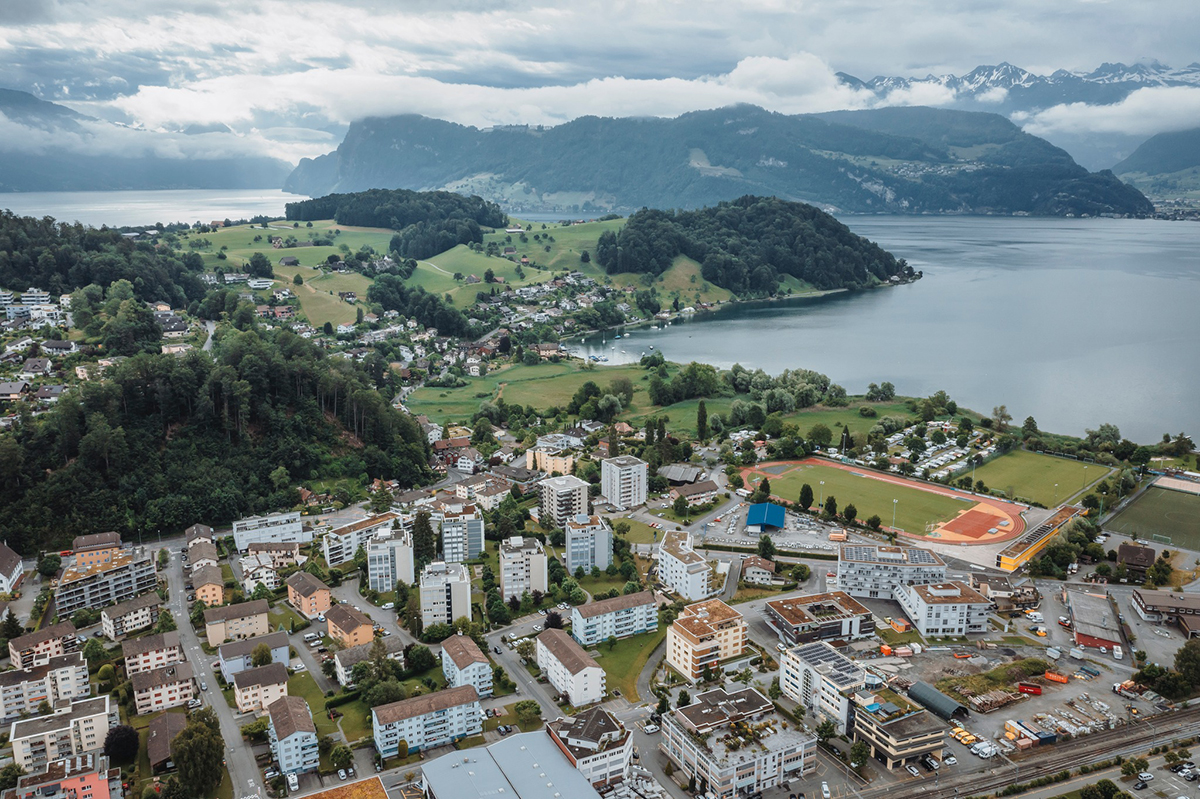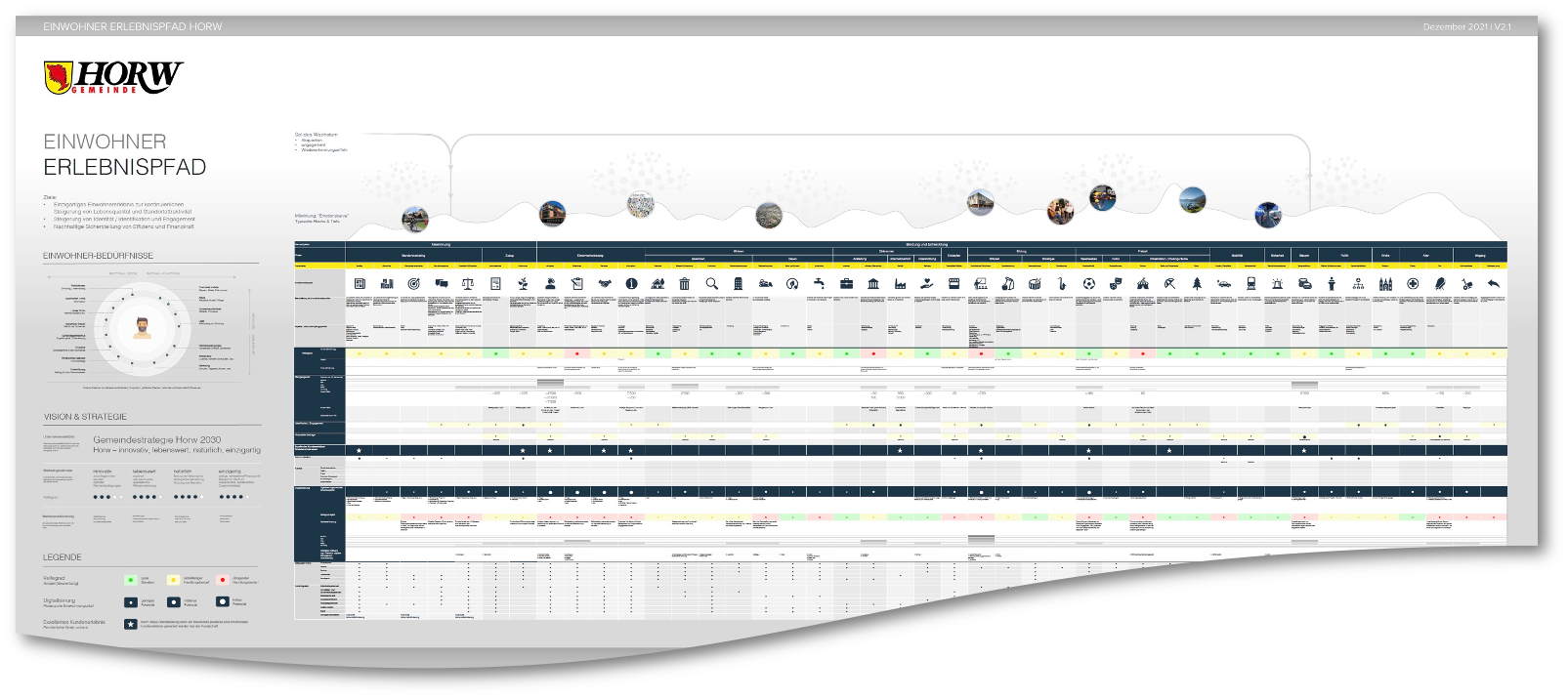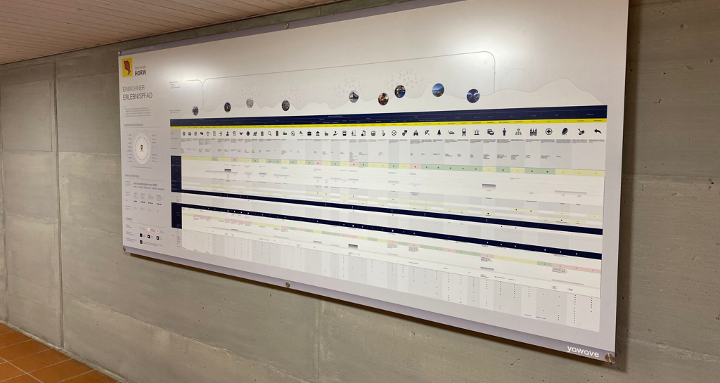Municipality of Horw x yawave
Digitization in the municipality of Horw
Digitization does not stop at municipalities and cities. In order to better derive the requirements for resident-centric digitization, the municipality of Horw developed a detailed “experience map” – from moving in, through living and working life, to moving out or passing away. Based on this detailed resident path, the physical and digital experience can be orchestrated in a targeted manner to derive effective measures related to community attractiveness and digitization.
Starting point
The municipality of Horw – a home for around 14,600 people, nestled in a picturesque setting with Lake Lucerne, numerous mountains and the vibrant city of Lucerne. Such location factors continue to play a central role in the attractiveness of a municipality as a place to live and work. But in a fast-moving age with ever more flexible ways of living and working and increasing digitization, it would be fatal to rest on such given factors. Rather, even as a municipality or city, one must place its very raison d’être, the inhabitants and their needs, at the center of one’s own activities.

For the municipality of Horw, the question arose of how to make the journey of different target groups within a citizen’s life visible on the one hand and how to better understand it by consistently taking the residents’ perspective on the other. The relevance for action to initiate and live out such a process in a targeted manner was additionally increased by various challenges and questions:
- Citizen-oriented digital strategy
A public authority in particular has a high level of responsibility and accountability to the public when it comes to expenditure. In order to guarantee the effectiveness of measures in the context of digital transformation, a future digital strategy should be consistently aligned with the residents, their life phases, and the needs existing therein. But how can this citizen’s view be taken in the first place?
- Hybrid community experience
An active and approachable community life is largely based on physical contact points. However, this does not exclude the possibility that digital services of the municipality can solve the needs of certain target groups of residents better and faster and that, in return, transactional processes can be designed more efficiently for the municipality. How can both physical and digital channels be integrated into the resident experience in the right place?
- Recording the quality of interaction in municipalities
A municipality is often a center of life for its inhabitants. Interactions between the population and the municipality are indispensable. How can the important factors of interaction frequency and quality be made visible at the individual contact points?
- Resident service consolidation for Smart City
Over the years, the number of different systems and applications relating to residents’ services has grown considerably, with certain applications also being prescribed by the canton. How can a more comprehensive understanding of the entire inhabitant journey be gained in relation to future priorities of digitalization up to Smart City?
- Touchpoint orchestration for multi-access experiences
There are countless touchpoints at various stages between the municipality with its various departments, employees, the residents’ council and the population. What are the responsibilities between the various internal and external agencies and how can these be orchestrated to create a holistic “multi-access” experience for the population?
- Service excellence for population retention
For Horw and the Lucerne region, it is no longer just a question of increasing their own attractiveness as a place to live and work in order to permanently attract new residents. Today, there is also an increasing question of population retention. So how can the municipality develop “service excellence” that not only makes the locality more attractive to the outside world, but also specifically binds the existing population to the municipality?

“The target picture of the experience path gives us orientation and helps us prioritize digitization measures. With yawave, we were able to effectively apply the concept of the customer journey to our community.”
Ruedi Burkard
Mayor of Horw
Solution
In order to clarify these issues and achieve the overarching goal of a consistent resident experience, a so-called Experience / Journey Mapping was conducted. In this way, all points of contact between the municipality and its residents could be brought together in a targeted manner on a large “big picture” to create an overall experience.
This approach was suitable precisely for the following reasons:
- Creation of a common target image, which can be used as a guideline for the entire municipality and all departments.
- Taking a resident’s perspective by walking the experience path from awareness through location marketing to moving away
- Linking of the individual contact points into an orchestrated process and consideration of the existing dependencies
- Avoid potential departmental silos.
- Leveraging synergies across the entire resident journey
- Prevent isolated action measures
- Illustrate quantity structures (e.g., number of processes) and derive priorities, since all existing potentials, visible gaps, and emerged fields of action can be directly compared with each other
Various interviews with the municipal council and key employees served as the basis for the “big picture”. This not only allowed for targeted information and detailed knowledge to be incorporated directly into the experience map, but also allowed for a more accurate sense of the common thrust of the future resident experience to be developed over time.
The various challenges and issues were picked up in the map both in terms of content and visuals. On the one hand, strategic topics such as emotional and rational resident needs and the recorded vision and strategy (mission statement, marketing characteristics incl. current maturity level and positioning) are recorded. These provide the direction for defining the target experience.

The largest part of the Experience Map is the experience path – that is, the concrete journey that a resident goes through from location marketing and moving in to possibly moving out. For this purpose, all points of contact between the municipality and its population were broken down and analyzed in detail. A total of 43 touchpoints together form the overall “Horw” experience – these individual contact points need to be linked to form a continuous citizen journey. In addition to a detailed description, the following aspects in particular were also examined in more detail at each individual contact point:
Especially the perspective of resident incidents (type, number, effort) had a high priority within the project, as this plays an important basis for targeted and prioritized digitization efforts. The central question was therefore: How can the volume, type and time spent on resident cases (inquiries, mutations, movements, etc.) be made visible at the various contact points in order to derive targeted measures at highly frequented touchpoints? To answer this question, each point of contact was reviewed for the type of incidents, specific time spent, quantity (number of cases), and overall volume (relative within the community). This approach addresses several issues (see above) – by digitizing purely transactional and frequently recurring incidents in a targeted manner, improving or digitally supplementing the citizen experience based on a clear data situation, and ultimately channeling investments into relevant, frequent incidents (digitization effort per incident -> max. ROI).
In order to determine the level of digital maturity and make gaps in terms of digital capabilities visible, the existing application portfolio was also inventoried and analyzed for each individual touchpoint. In this way, the municipality of Horw can see at a glance where there are still open construction sites within the residents’ path.
Results
The municipality of Horw has managed to successfully apply a customer-oriented conceptual approach to the “Public Sector”. With the structured and visualized view of the entire citizen experience path, the municipality of Horw has a unified view of all interaction points with the population and the related service components of the administration.
The “Big Picture Residents’ Experience Path Horw” manages to align the various departments and residents’ councils on a common goal picture, to develop a common “language” with regard to residents’ contact points, and to provide new employees and suppliers with a quicker orientation about the municipality’s processes – it creates transparency and orientation. Not least because of this, this resident experience trail hangs prominently in the council chamber (see image below).
In particular, however, this created a foundation for an effective digitization strategy. By locating digitization requirements and applications along the touchpoints, the “big picture” enables both prioritization and holistic consideration of key digitization initiatives, as well as deprioritization of existing applications and the associated optimization of operating costs.

Success factors
Various factors were decisive on the way to the result described above:
- Creative tranfser of customer-oriented methods into the public sector
- Structuring target experience and processes (Experience & Process Mapping)
- Formulation of the target experience per touchpoint from the citizen’s perspective
- Location of resident incidents (type, number, effort)
- Location of the existing applications
- Involvement of the local council with interviews and a workshop
- Openness and cooperation of the clients and project managers
